Graceland Blu-ray Movie
HomeGraceland Blu-ray Movie 
Blu-ray + Digital CopyImage Entertainment | 2012 | 84 min | Not rated | Jul 23, 2013

Movie rating
6.5 | / 10 |
Blu-ray rating
| Users | 0.0 | |
| Reviewer | 4.0 | |
| Overall | 4.0 |
Overview
Graceland (2012)
A desperate father risks everything to save his kidnapped daughter.
Starring: Arnold Reyes, Menggie Cobarrubias, Dido De La Paz, Leon Miguel, Ella GuevaraDirector: Ron Morales
| Foreign | Uncertain |
| Thriller | Uncertain |
| Drama | Uncertain |
| Adventure | Uncertain |
Specifications
Video
Video codec: MPEG-4 AVC
Video resolution: 1080p
Aspect ratio: 1.84:1
Original aspect ratio: 1.85:1
Audio
Filipino (Tagalog): DTS-HD Master Audio 5.1
Filipino (Tagalog): Dolby Digital 5.1
Subtitles
English
Discs
25GB Blu-ray Disc
Single disc (1 BD)
Digital copy (as download)
Playback
Region A (locked)
Review
Rating summary
| Movie | 4.5 | |
| Video | 4.0 | |
| Audio | 4.0 | |
| Extras | 4.0 | |
| Overall | 4.0 |
Graceland Blu-ray Movie Review
No Saving Grace
Reviewed by Michael Reuben July 22, 2013Ron Morales, an American writer/director of Filipino descent, was researching a project in the Philippines when he kept encountering dark tales of kidnapping, child prostitution and other acts by a widespread criminal underground that operated with apparent impunity. As Morales looked more closely at this shadow world underpinning his homeland, he observed (as he would later describe) that
the conventional division between 'good' and 'bad,' as commonly understood [in]Western society, seems to be replaced by a less philosophical but more practical division between the have or have not. Those who 'have' also have the opportunity to make choices, even in a moral sense. Those who 'have not' are powerless against the whims of those who have.Out of this sense of an amoral struggle for survival came Graceland, a harrowing thriller shot in and around Manila with an international crew and a Filipino cast, many of them well-established professionals in their native land. Morales' tightly packed script sustains a breathless pace while constantly asking difficult, even dangerous questions. Why does misfortune fall disproportionately? Why are official channels effective for some more than others? When one's family is threatened, which moral principles are the first to go—and which are the last? Graceland premiered at the Tribeca Film Festival in April 2012. It received a limited theatrical release a year later. (Note that both of these events occurred before the USA TV series of the same name began airing in June 2013.) Drafthouse Films, the unique publisher equally devoted to the grindhouse and the arthouse, has given the film a worthy treatment on Blu-ray, which is being distributed by Image/RLJ Entertainment.
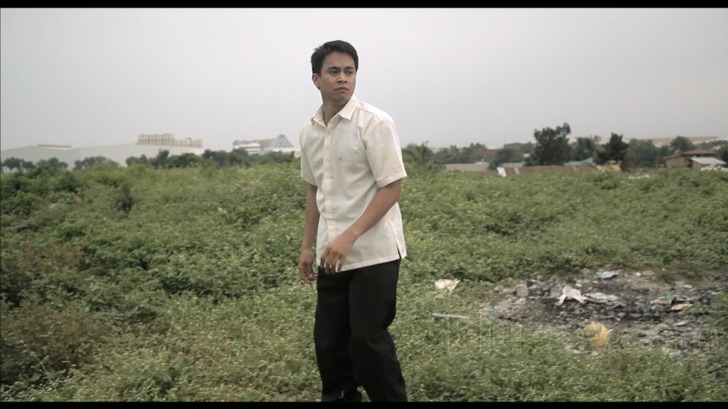
The central figure of Graceland is Marlon Villar (Arnold Reyes), a modest man who has spent the last seven years as a chauffeur for a Phillipine politician, Manuel Changho (Menggie Cobarrubias). Changho currently serves in Congress and is running for reelection on a platform of "change". Whatever his political positions may be, Changho is a morally bankrupt individual who routinely patronizes teenage prostitutes barely older than his own daughter, Sophia (Patricia Gayod). In the film's opening sequence, Marlon waits in the car while Changho finishes an assignation, then has the unsavory task of driving the young girl home. (Warning for the squeamish: The film includes full frontal nudity, but body doubles were used, so that none of the underage performers were exploited.) Marlon also has a family: an ailing wife in hospital, Lina (Angeli Bayani), whose treatment he can't afford, and a daughter, Elvie (Ella Guevara), who is Sophia's age. Every day, Marlon and Elvie pray together for Lina's recovery. Because Elvie and Sophia are still too young to fully appreciate class distinctions, they have become friends, a fact of which Sophia's mother, the brittle Mrs. Marcy Changho (Marife Necesito), disapproves. When Marlon arrives in the morning to drive Sophia to school with Elvie in tow, Mrs. Changho reprimands him sharply; he should get his own daughter to school first. But Sophia is a high-spirited girl who is used to getting her own way, and she arranges with Elvie to cut class and meet so that the two of them can go shopping together. While trying on clothes (and, at Sophia's instigation, shoplifting), they end up swapping school uniforms, which is what leads to an identity switch with devastating consequences. Later that day, a cold-blooded kidnapper known as Visel (Leon Miguel) seizes Elvie in Sophia's uniform to extort a ransom from Changho. But Visel quickly learns he has the wrong girl and uses Elvie to force her father into an elaborate charade designed to convince Changho that both their daughters have been kidnapped. The steps that Marlon must take to implement Visel's plan are terrifying, unsavory and contrary to everything that Marlon believes as a man and a human being. But he has no choice if he wants to save his daughter. Changho calls in a police detective named Ramos (Dido De La Paz), whom he pays well for his services. (This appears to be an accepted practice in Changho's world.) Det. Ramos immediately suspects collusion between Marlon and the kidnapper, and he is unrelenting in his interrogation and pursuit. Under Ramos' watchful eye, Marlon has to manage to do Visel's bidding and somehow ensure that the ransom is paid. Whenever he tries to tell Visel that his situation is impossible, Visel puts his cell phone near Elvie so that Marlon can hear her cry out to him for help. Graceland is loaded with subtext and things unspoken, because all of the main characters are hiding something. Marlon, of course, has to hide from everyone around him that the kidnapping of Changho's daughter is a fraud. Changho has to hide his seamy sexual predilections, of which Det. Ramos clearly has his suspicions. Visel morphs from kidnapper to confidence man (possibly more). And further layers are revealed as the film goes on, such that one reaches the end of the film and immediately wants to watch it again. Graceland is also a work of striking visual imagery, which is all the more astonishing considering the difficult circumstances (detailed in the extras) under which it was shot. Memorable sights include a close-up of two spiders locked in combat (a low-rent variation of cockfighting, with bets on the outcome); a group of teenage prostitutes arrayed for customers' inspection, with lifeless eyes and ashen faces drained of all vitality; and a vast refuse dump that extends as far as the eye can see, which is the scene of several key events. The refuse dump serves not as a metaphor but as a literal illustration of the destination to which Marlon and his family seem to be headed—castoffs of the wealthy and powerful who can afford to pay for health care, purchase police protection and buy back their children when necessary. The dump is the background used in the film's one-sheet and also on the cover of the Blu-ray, and Marlon stands in the foreground with the expression he so often wears in the film, that of a man desperately hoping for divine intervention from the heaven to which he daily prays.
Graceland Blu-ray Movie, Video Quality 
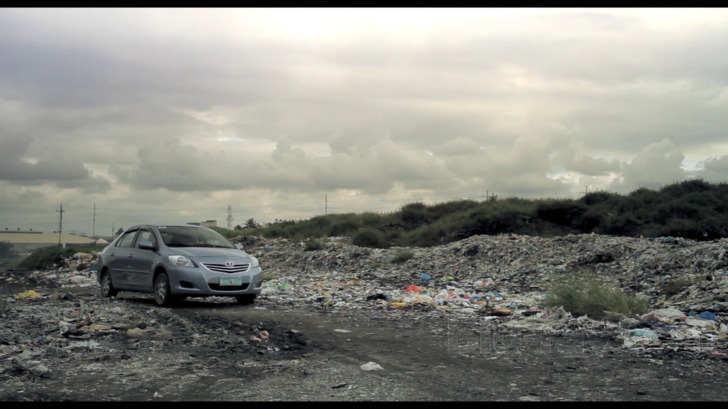
Graceland is a testament to the power that digital technology has placed in the hands of independent filmmakers. It was shot on DSLR cameras (the Canon 5D series, according to IMDb) by Sung Rae Cho, a Japanese DP who relocated to America and worked his way up as a focus puller and camera operator on TV, feature films and commercials. The consensus seems to be that one must have professional expertise to obtain good results when filming with a DSLR camera, and Graceland certainly bears out Cho's technical mastery. His images are consistently as detailed, focused, well-resolved and well-composed as many productions shot on much bulkier and more costly equipment. (In the commentary, Cho gives credit to rigs constructed by director Morales, whose early experience in the film industry was as a grip.) The image on Drafthouse Films' 1080p, AVC-encoded Blu-ray is consistently finely detailed, free of interference and, with minor exceptions noted below, noiseless. The blacks, essential in a film where so many scenes occur at night or in darkened interiors are solid and deep; indeed, there are a few scenes where one might have wished (and the filmmakers probably did) for additional light. Colors are almost unrelentingly drab, which partly reflects a heavy reliance on available light and partly results from an artistic choice for a palette that suits the film's somber mood. The film's average bitrate of just under 24 Mbps is more than sufficient for the material, and compression errors were nowhere to be seen. The one flaw in the image probably reflects the limitations of any film shot on DSLR, both in terms of the sensitivity of the electronic sensors capturing the image and the available lenses. Aliasing is sometimes visible on horizontal edges, usually of distant objects, where either the lens or the sensor cannot maintain a stable focus on the edge. The phenomenon is rare enough that it isn't a major distraction, but aliasing has become so uncommon in digitally originated movies that its appearance is now noteworthy. Otherwise, Graceland represents a truly remarkable feat of no-budget filmmaking, and the Blu-ray represents it well.
Graceland Blu-ray Movie, Audio Quality 
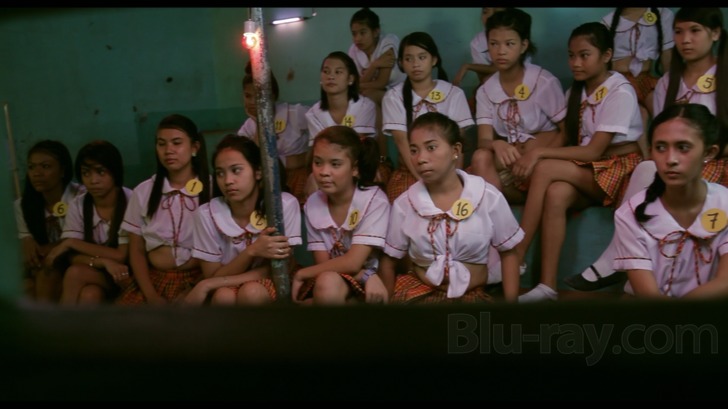
Graceland's original 5.1 soundtrack is offered in both lossless DTS-HD MA 5.1 and Dolby Digital 5.1 (at 448 kbps). The dialogue is almost entirely in the Filipino language of Tagalog, although characters occasionally interpolate a line of English. The English subtitles include the fragments of English dialogue, not only for the sake of continuity, but also because the words are almost impossible for the unaccustomed ear to pick out from the stream of Tagalog conversation. The sound design for Graceland is subtle but sophisticated. It places sounds appropriate to each environment in specific locations in the surround field, but doesn't call so much attention to them that the viewer is pulled out of the movie. If one doesn't stop and pay attention (as I try to do from time to time with each review title), these sounds simply blend into the experience. So, for example, in the opening sequence when Marlon enters the hotel room where Changho has concluded his assignation with the teenage prostitute, the sounds of rumbling city traffic outside the building are distinctly audible, but they are part of the environment. The room where Visel holds Elvie captive has a constant drip of water, which operates as a kind of sonic signature. The garbage dump has the usual scavenging birds. The film uses sound to help identify place and also to mark certain major events (I can't be more specific). The moody score for Graceland was supplied by Adam Schoenberg and Steven Schoenberg, who look related but don't admit to it anywhere in their official bios.
Graceland Blu-ray Movie, Special Features and Extras 
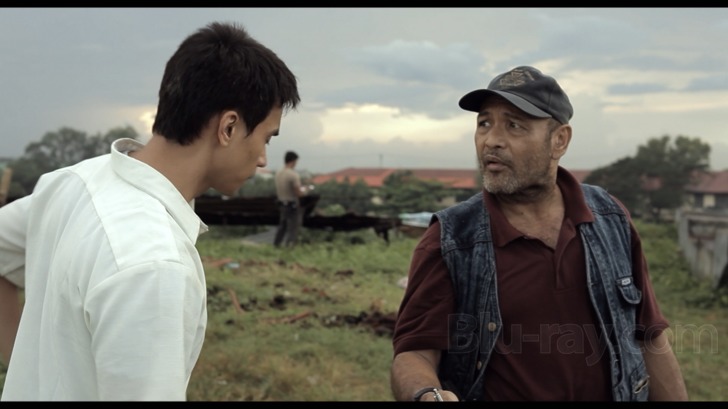
- Commentary with Writer/Director Ron Morales, Producers Rebecca Lundgren and Sam Rider, Director of Photography Sung Rae Cho and Gaffer Blaise Miller: Unlike many group commentaries, this one does not devolve into a chaos of overlapping voices, and I suspect that results from the common experience the group shared in making Graceland under nearly impossible conditions, which is the main focus of their discussion. This is the rare commentary where recollections of what happened on the day of shooting a particular scene are valuable, because every scene was a special challenge, given the lack of money, the difficulties of working in a foreign country, and the absence of official cooperation. The key to completing the film, everyone agrees, was the commitment of the professional Filipino cast.
- A Life for Every Lie: The Making of Graceland (1080p; 1.78:1; 12:24): These are individual interviews with the commentary participants, allowing each of them to expand at greater length on aspects of the film of special import to them.
- Deleted Scenes (1080p; 1.78:1; 9:30): There are five scenes, including an alternate version of the film's opening shot and an additional scene of Det. Ramos interrogating Marlon. The scenes are not listed separately.
- Alternate Ending (1080p; 1.78:1; 1:08): According to the commentary, three endings were shot. According to the documentary, A Life for Every Lie, the ending that was used was created by Morales spontaneously when he was inspired by a particular location. This alternate ending was probably scripted and no doubt read well on the page, but it is far less effective than the ending that appears in the film.
- Graceland Trailer (1080p; 1:78; 1:45): This is a well-constructed trailer that captures the film's sense of desperation without telling too much of what happens.
- Trailers (1080p, except where noted): The list of Drafthouse trailers continues to grow.
- The FP
- Bullhead
- Klown
- The Ambassador
- Miami Connection
- Wake in Fright
- Wrong
- Pieta (480i)
- Drafthouse Alliance Stinger (this also plays at startup, where it can be skipped with the chapter forward button)
- Insert: As with most Drafthouse releases, a booklet is included with high-quality stills and credits for both the film and the disc. Unlike most booklets for Drafthouse discs, this one contains no essays or interviews.
Graceland Blu-ray Movie, Overall Score and Recommendation 
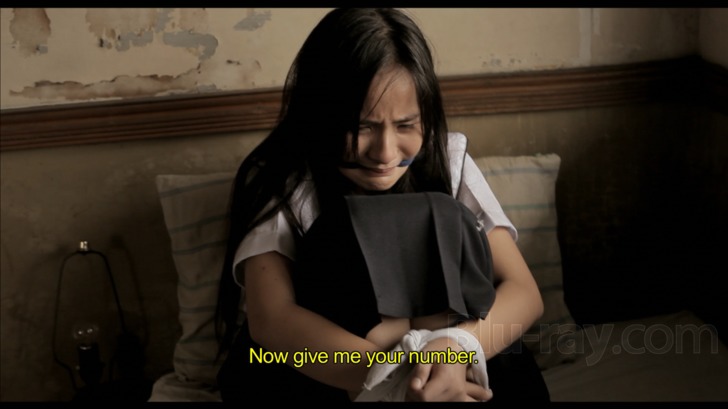
I have tried not to give away any of Graceland's secrets, and, as a result, I am unable to address various criticisms of the film that I have encountered while researching this review—criticisms that will no doubt be repeated by some readers of the review who then watch the Blu-ray and wonder why I have praised the film so highly. All I can offer at this point is that Morales knew what he was doing when he set the film abroad. He is exploring moral questions of universal validity, but he has chosen to do so through a story that plays out in a particular place with its own set of rules. Check Law & Order at the door. Highly recommended.
Similar titles
Similar titles you might also like

Pioneer
Pionér
2013

Diva
1981

Graduation
Bacalaureat
2016

The Fool
Дурак / Durak
2014

Leviathan
Левиафан / Leviafan
2014

Monos
2019

State of Siege
État de siège
1972

Europa
Zentropa
1991

36th Precinct
36 quai des Orfèvres
2004

Cold War II
Cold War 2 / Hon zin 2
2016

Violent Cop
その男、凶暴につき
1989

Heli
2013

High and Low 4K
天国と地獄 / Tengoku to jigoku
1963

Il Divo
2008

Holy Spider
2022

Mandabi
1968

The Devil Strikes at Night
Nachts, wenn der Teufel kam
1957

The Wild Pear Tree
Ahlat Ağacı
2018

Shoplifters
万引き家族 / Manbiki kazoku
2018

Birds of Passage
Pájaros de verano
2018